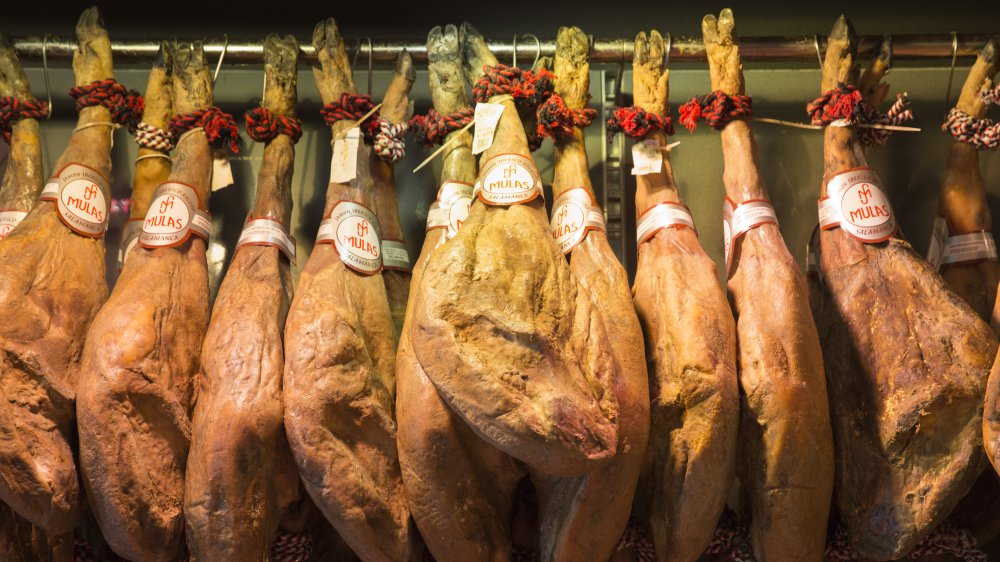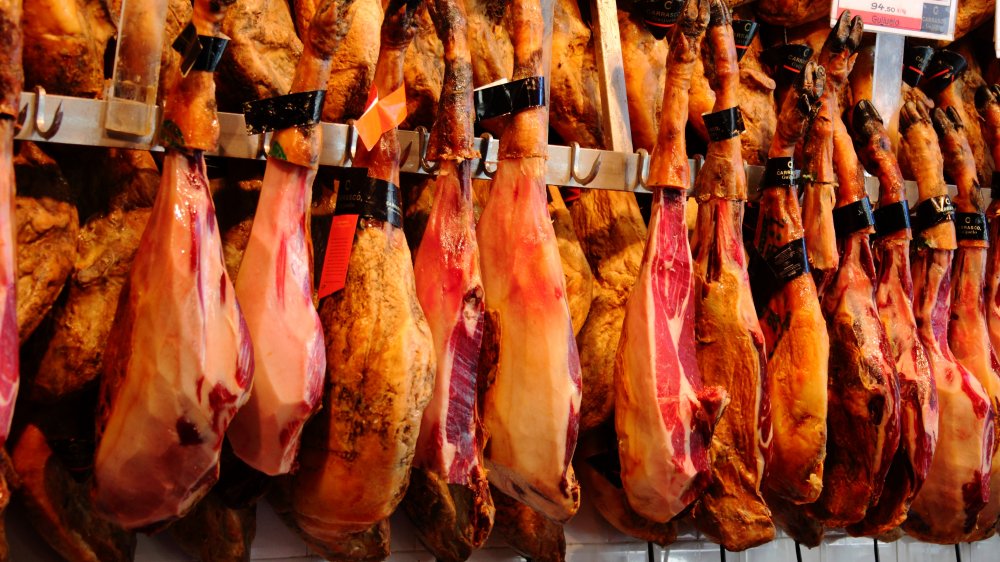The Real Reason Iberico Ham Is So Expensive
Iberico ham, otherwise known as jamon Iberico, is one of the most popular foods in Spain, a country widely known for its incredible gastronomy scene. It's a cured ham, similar to prosciutto, and only comes from the rear legs of the pig (via Insider).
As with Wagyu beef, Iberian pigs boast marbling of their meat, a term used for when the fat of the animal entwined with the muscle, as opposed to being a layer on the outside of the cut of meat (via Lone Mountain Wagyu).
The first reason the ham is so expensive is that it is only produced in a small number of districts in Spain, as well as certain areas of Portugal. As with many famous European products, it's protected by the European's Protected Designation of Origin system, which also protects items such as Champagne.
The second reason it has such a hefty price tag is that it's extremely expensive to raise the pigs, which are slaughtered at 15 months. The majority of the pigs that turn into Iberico ham are free-range which requires a good deal of real estate. Regulations prohibit raising any more than two pigs per hectare of farmland. Connoisseurs will tell you that true Iberico ham has to come from pigs that are fed a diet of acorns. Such a diet is more pricy for the farmer than providing the pigs with a cheaper feed alternative.
Other reasons for the hefty Iberico ham price
The free-range environment in which the pigs live also has a supply of olives, berries, and other nuts, which the pigs also eat, which can affect the flavor of the meat.
It's also pricey because it takes a long time to produce the ham. After being salted for 15 to 20 days, depending on the size of the legs, they're kept in a series of aging rooms for between eight to 11 months. Then, they're moved to a cellar, where they can stay for anywhere from two to four years, depending on the weight of the leg. From pig to plate, the whole process tends to take about five years.
One way to know whether you're having true Iberico ham is by checking the color of the hoof, which tends to be kept on the leg of the pig throughout the curing process. Iberico hogs are known as pata negra because their hooves are black (via Jamon). Serrano pigs, on the other hand, have white hooves. This is a feature passed down from the ancestors of the Iberian hogs, wild boars.
A single leg can sell for a whopping $4,500 and just three ounces of the luxurious meat can go for almost $25 (via Jamon).

